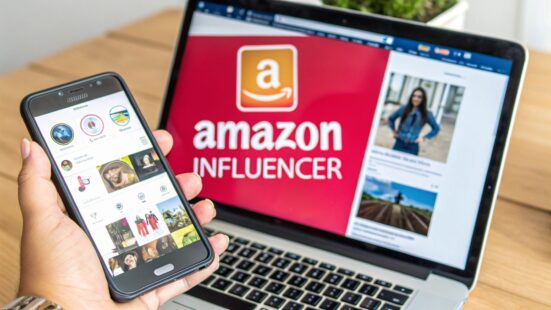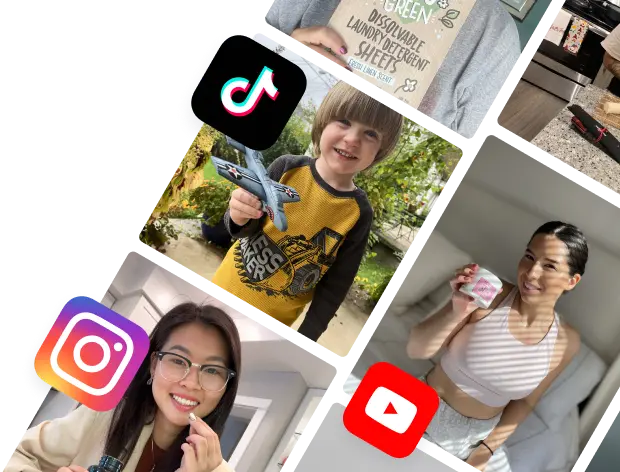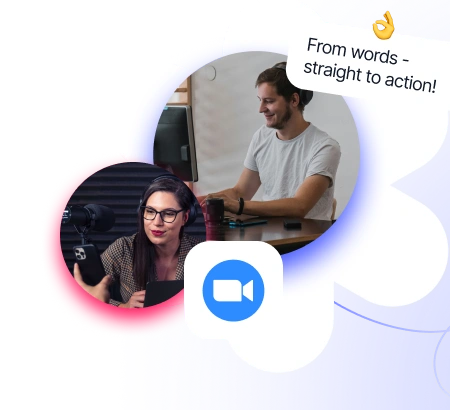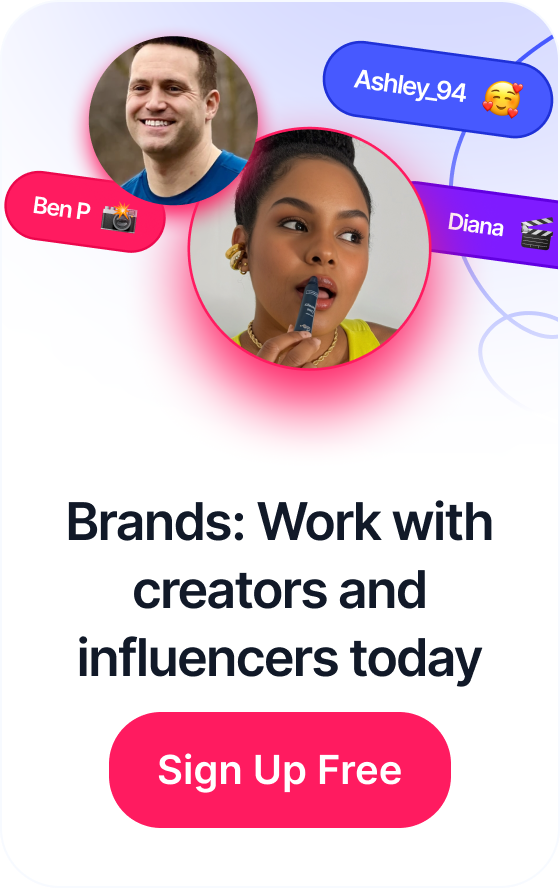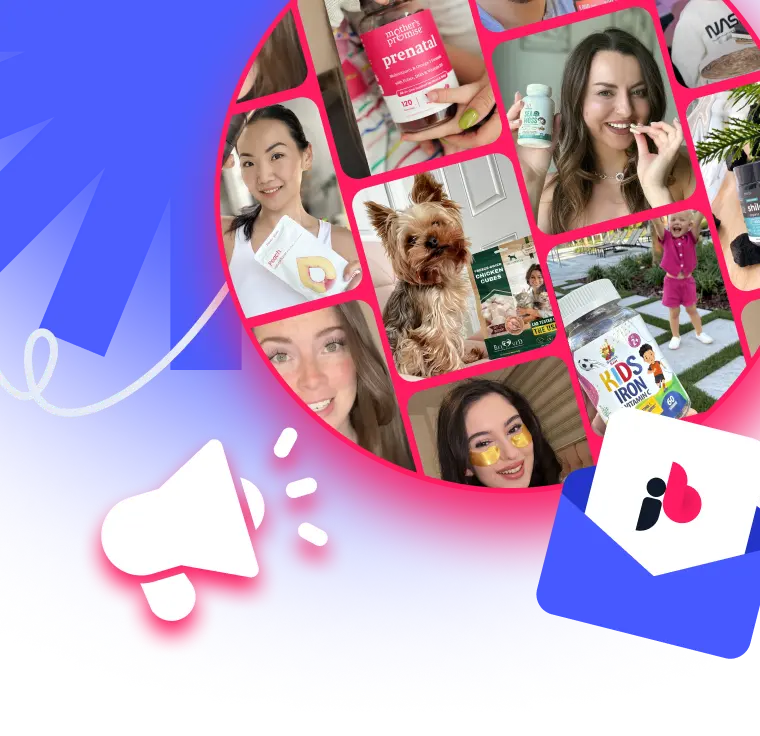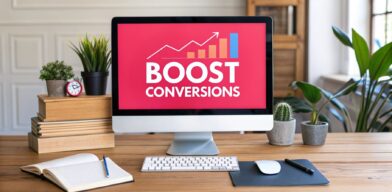 Boost Your Affiliate Marketing Conversion Rates Today
Boost Your Affiliate Marketing Conversion Rates Today
The Amazon Influencer Program is a fantastic way for content creators to make money from their influence. It lets you build a personalized storefront right on Amazon, where you can earn commissions when your followers buy products you recommend. It's a big step up from just sharing traditional affiliate links, transforming you into a trusted shopping guide for your audience.
Table of Contents
What Is the Amazon Influencer Program Anyway?

Think of the Amazon Influencer Program as your very own digital boutique, hosted on the world's biggest marketplace. It's an exclusive extension of the Amazon Associates program, built specifically for creators who have built a real, engaged following on social media.
Instead of just dropping individual product links here and there, the program gives you a single, easy-to-remember URL, like amazon.com/shop/yourname. This one link is your gateway. It takes your audience to a custom storefront where you can group products into themed "Idea Lists," post shoppable photos, and even upload your own product review videos.
How Does It Work?
The concept is pretty straightforward: when someone from your audience clicks through your storefront and buys a qualifying product, you earn a commission. These commission rates can vary quite a bit depending on the product category, anywhere from 1% to as high as 20% for specific items.
This setup is brilliant because it rewards you for being a genuine source of recommendations, not just a walking advertisement.
The real magic of the program is how it builds trust. Your storefront acts as a one-stop-shop for everything you genuinely love and use. This creates a level of credibility and consistency that scattered affiliate links just can't match.
At its core, the Amazon Influencer Program is about turning the trust you've already built with your audience into a dependable source of income. They already value your opinion; your storefront just makes it incredibly simple for them to follow your lead.
Key Earning Opportunities Within the Program
Your storefront is just the start. The program offers several different avenues for earning, which is great because it lets you play to your strengths as a creator:
- Custom Storefront Commissions: This is your bread and butter. Any sale that comes through your main storefront page adds to your earnings.
- On-Site Shoppable Content: You can create shoppable videos and photos that Amazon might feature right on product pages. This is huge—it gets your content in front of millions of Amazon shoppers, not just your own followers.
- Amazon Live Streams: You can go live! Host broadcasts where you demo products, answer questions, and talk directly with viewers, all while featuring the products for easy purchase right in the stream.
- The Creator Hub: This is a newer feature that lets you join campaigns led by brands, opening up another revenue stream that goes beyond the standard commissions.
Amazon Influencer Program vs Amazon Associates
To really get what makes the Influencer Program special, it helps to see it side-by-side with its predecessor, the Amazon Associates Program. They're related, but they serve different purposes.
Here's a quick breakdown of the main differences:
| Feature | Amazon Influencer Program | Amazon Associates Program |
|---|---|---|
| Primary Tool | Custom storefront with a vanity URL | Individual affiliate links |
| Best For | Social media influencers with an established following | Bloggers, website owners, and publishers |
| Audience Interaction | Creates a curated, branded shopping experience | Drives traffic directly to product pages |
| Content Format | Shoppable photos, videos, idea lists, live streams | Text links, image links, banners |
| Approval | Requires an active social media account (YouTube, Instagram, Facebook, or TikTok) | Requires a website or blog |
Essentially, while Associates is great for driving traffic from a blog post or article, the Influencer Program is designed for the dynamic, visual world of social media. It's all about creating a cohesive brand experience for your followers.
This multi-faceted approach turns your social media influence into a powerful e-commerce engine, all running within Amazon's massive marketing ecosystem. If you want to understand the bigger advertising world where this program fits, checking out Everything You Need To Know About Amazon Ads can give you some valuable context on how brands leverage the platform to boost sales.
So, What Does It Actually Take to Get Approved?
Let's cut right to the chase. Getting into the Amazon Influencer Program isn't about hitting some secret, magic number of followers. It’s more of a vibe check. While Amazon keeps the exact criteria under wraps, it’s clear they care way more about the quality of your community and how authentic your content feels than they do about vanity metrics.
Think of it like this: your social media profile is your resume. Amazon wants to scroll through your feed and see a history of genuine connection, not just a bunch of inflated numbers.
To even be considered, you'll need an active, public account on YouTube, Instagram, Facebook, or TikTok. But don't get hung up on follower counts. The real metric here is engagement. A creator with 2,000 followers who trust their recommendations is infinitely more valuable to Amazon than someone with 100,000 followers who never interact.
Why Quality and Engagement Beat Follower Counts Every Time
Amazon has one primary goal: to sell products. And they know, from mountains of data, that sales are driven by authentic recommendations from people we trust. That’s why inflated follower counts and low-quality engagement are immediate red flags for them.
So, what does "good" engagement actually look like in Amazon's eyes?
- Real Conversations: Are people in your comments asking questions about products you show? Are they sharing their own experiences or tagging friends? This shows your audience is genuinely tuned in.
- Consistent Interaction: A steady stream of likes and shares proves your content is hitting the mark and resonating with your community.
- High-Quality Content: This is non-negotiable. Your photos and videos need to be clear, well-lit, and actually provide value. Shaky, dark videos or blurry photos just aren’t going to cut it.
Your social media feed is your portfolio. It has to show that you take your craft seriously and have built a real, tangible relationship with your audience.
You don't need a massive audience to get approved; you need the right audience. Amazon is looking for proof that when you speak, people not only listen but trust your judgment enough to pull out their wallets.
This is exactly why the application process hinges on a manual review of your social media. They’re looking for creators who can naturally weave product recommendations into their content without sounding like a used-car salesman.
The Unspoken Rule: Your Content Niche
Having a clear niche isn't listed as an official requirement, but trust me, it’s a massive advantage. If your feed is a random jumble of vacation snaps, cat photos, and a stray tech review, it’s tough for Amazon to see you as an authority on anything.
On the other hand, if you consistently post about something specific—say, home coffee brewing—you’ve already positioned yourself as the go-to expert in that space. This makes your recommendations far more credible and, you guessed it, much more likely to convert into sales.
- Consistency is Your Best Friend: A history of posting regularly signals that you’re a dedicated creator, not just a hobbyist.
- Become an Authority: Focusing on a specific area (like "budget-friendly home decor" or "sustainable fashion") builds incredible trust and authority.
- Create Product-Adjacent Content: Your feed doesn’t have to be a constant stream of reviews, but it should naturally lend itself to them. A travel blogger can easily recommend their favorite luggage, just as a chef can recommend their go-to kitchen gadgets.
At the end of the day, Amazon is hunting for partners who can act as trusted shopping guides. Your social media account must prove you’re already playing that role for your community. Your approval really comes down to one thing: showing them you’re a creator whose followers don’t just like your content—they truly value your opinion.
Alright, so you’ve got a handle on what Amazon is looking for. Now, let’s get down to brass tacks and walk through the actual application process. Getting into the influencer program amazon isn't about filling out some crazy-long form; it’s really about showing off your social media profile in the best way possible. The whole thing is pretty straightforward, but a few small details can make all the difference.
First things first, head over to the official Amazon Influencer Program homepage and hit that "Sign Up" button. You'll be asked to either create a new Amazon customer account or log into an existing one. Just a heads-up: this is the account your influencer profile will be tied to, so make sure it’s one you use regularly.
The next step is the most important one: connecting your main social media account. You'll need to link the YouTube, Instagram, TikTok, or public Facebook profile you want Amazon to look at. Pick the one that truly highlights your best content and shows you have a real, engaged audience.
The Application and Initial Review
Once you’ve linked your account, Amazon's system runs a quick, often instant, check. If you meet their secret-sauce benchmarks for followers and engagement, you'll get a conditional approval. Think of this as the first green light, but you're not fully in the club just yet.
This infographic breaks down the core journey from start to finish.

As you can see, getting approved is just the beginning. Customizing your storefront is where you really start to build your brand on the platform.
After that initial nod, you can start setting up your storefront. This is your moment to make a killer first impression.
- Choose a Memorable URL: Grab a simple, easy-to-remember vanity URL like
amazon.com/shop/yourname. This is the link you'll be sharing everywhere. - Craft a Compelling Bio: Write a quick, punchy bio that tells visitors exactly who you are and what your page is all about.
- Upload a Professional Profile Picture: Use a high-quality headshot or your brand logo—whatever is consistent with your other social profiles.
Navigating the Final Approval Hurdle
Hold on, you’re not done. The key to unlocking on-site shoppable videos—by far the most powerful earning tool—is getting three of your videos manually approved. This is where a lot of people get stuck.
This is your final test. Amazon's team will manually watch these three videos to ensure they meet quality standards. They are looking for helpful, authentic content, not just another ad. You only get three attempts to pass this review, so make them count.
Your videos need good lighting, clear audio, and have to provide real value. It’s more about "show and tell" than a hard sell. Once these three videos get the thumbs-up (which can take anywhere from a few days to over a week), your account is officially, 100% activated.
If you don't get approved on the first try, don't sweat it. Amazon usually gives some vague feedback. Use it. Take a hard look at your social media, double down on boosting engagement, create even better content, and then give it another shot. Success in the influencer program amazon often belongs to those who are persistent and willing to tweak their approach.
Turning Your Storefront Into an Income Stream
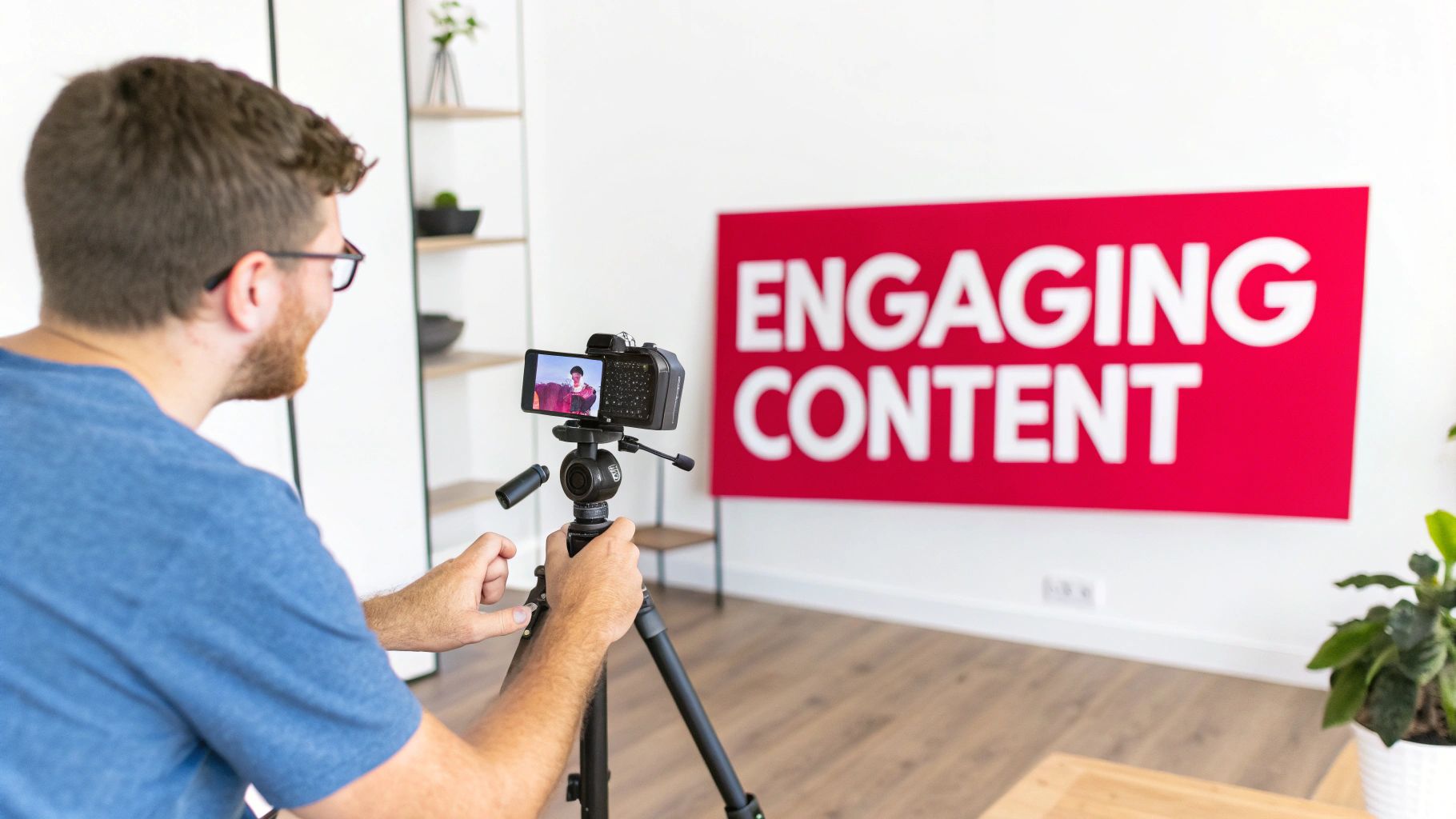
Getting that approval email for the influencer program amazon is a great feeling, but it’s really just crossing the starting line. Now the real fun begins: turning that new digital real estate—your storefront—into a real, consistent source of income. This is where your strategy, creativity, and authenticity all come together to make it happen.
Think of your storefront less like a random product feed and more like your own curated boutique. It's a space designed to solve your audience's problems. Your followers already trust your taste and expertise; your job is to make it incredibly simple for them to shop your recommendations. The best way to do this is with well-crafted "Idea Lists."
These lists are the true backbone of a successful storefront. They let you group products into logical, helpful themes that speak directly to what your audience actually wants and needs. So, instead of a generic "My Favorites" list, you get specific and create value-driven collections that tell a story.
Crafting Compelling Idea Lists
The magic of a great Idea List is its ability to offer a complete solution. Your followers aren't just looking for one random product; they're often trying to achieve a specific goal or replicate a setup you've shown them.
Here are a few examples of how you can create problem-solving Idea Lists:
- "My Complete Podcast Setup Under $500": This is perfect for aspiring podcasters who have a clear budget. You’re giving them an all-in-one shopping list they can trust.
- "Travel Gear I Can't Live Without": A must-have for any travel creator. This list is full of tested, trusted gear, from packing cubes to the perfect neck pillow.
- "Cozy Apartment Makeover Essentials": If you’re a home decor influencer, you can use this to guide followers on creating a specific vibe, from throw blankets to ambient lighting.
Every list should be a direct reflection of your niche and the content you're already creating. This approach turns your storefront from a simple product grid into a genuinely valuable resource, which builds deeper trust and, naturally, encourages more purchases.
Your storefront is more than a sales page; it's a library of your best recommendations, organized to perfection. The easier you make it for your followers to find solutions, the more likely they are to convert from browsers into buyers.
This kind of strategic curation is exactly how top earners in the Amazon Influencer Program maximize their commissions. And speaking of earnings, the potential is pretty dynamic. Amazon influencers earn commissions that vary by product category, ranging anywhere from 1% to as high as 20% for each sale, paid directly by Amazon. On top of that, many influencers supplement this by charging brands directly for creating specific content.
This dual-income model makes sense when you see the stats: over 55% of social media users have bought something on Amazon because of an influencer's suggestion. It's a powerful channel.
Bringing Products to Life with Shoppable Content
Idea Lists give your storefront structure, but shoppable photos and videos are what give it life. These visual assets are your chance to show off products in a way that a standard Amazon product page just can't.
Upload high-quality photos of you actually using the products. Recommending a blender? Post a picture of the awesome smoothie you just made with it. Promoting a travel backpack? Share a shot of it on your latest adventure. Context is everything.
Videos take it a step further by letting you "show and tell." A short, vertical video demonstrating how a gadget works or explaining why a specific skincare product is a staple in your routine is incredibly persuasive. It closes the gap between seeing a product online and understanding its real-world value.
Authenticity Is Your Greatest Asset
At the end of the day, the engine that drives your long-term success is trust. In a world flooded with sponsored content, your genuine, honest opinion is your most valuable currency. You should only recommend products you truly believe in and have personally vetted.
Your audience can spot a fake sales pitch from a mile away. If you promote a low-quality item just to snag a commission, you risk damaging the very trust that makes your influence meaningful in the first place. An authentic, well-curated storefront not only generates sales today but also builds unbreakable loyalty for tomorrow. That foundation of trust is the real secret to building a sustainable and profitable business through the influencer program amazon.
As you grow, you might also want to explore other income streams. Looking into new strategies, like those for monetizing AI influencers, can give you a broader perspective on the entire creator economy.
Unlocking Sales with On-Site Content Creation
Once you've set up your storefront, you might think the work is done. But the real magic of the influencer program amazon—and where the serious money is—lies in a powerful, often overlooked feature: on-site content creation.
This is your golden ticket. It's how you move beyond your own social media following and get your content directly in front of millions of Amazon shoppers at the exact moment they’re ready to buy.
Picture this: someone is on Amazon, looking for a new coffee maker. They scroll past the polished, professional brand photos and then they see it—your video. It's you, in your kitchen, unboxing the machine, showing how it works, and giving your honest opinion. That's the power of on-site placement.
Instead of trying to pull traffic from Instagram or TikTok over to Amazon, your review videos and photos become permanent assets on the product pages themselves. They work like a 24/7 sales assistant, building trust and answering questions right when someone has their credit card out.
The Game-Changer: On-Site Placement
The true value here is reaching what marketers call "warm" traffic. These aren't just random followers; they are motivated buyers actively researching a specific item. Seeing a video from a real person cuts through the marketing noise and adds a layer of authenticity that branded content just can't match. This one feature is the biggest difference between having a simple storefront and building a supercharged income stream.
One creator I know earned over $1,000 in their first month just by grinding out a high volume of these on-site shoppable videos. It proves that a dedicated strategy focused on on-site content can pay off, and fast.
Your on-site videos are like having a personal recommendation placed in front of every single person considering that product on Amazon. The scale is immense, and the audience is perfectly primed to buy.
This model is so effective that Amazon keeps tweaking the program to lean into it. They even experimented with an 'Inspire Tab,' which was a social-style feed with tagged products. But while it got tons of views, the conversion rates just weren't as high as content placed right on the product pages. Amazon's data-driven decisions highlight just how valuable it is to get influencer content right at the point of sale. You can discover more insights about these program changes from creator analysis to see how the platform is evolving.
Best Practices for Creating High-Converting Videos
Making videos that actually convert isn't about Hollywood-level production. Forget the fancy commercials. It's all about being helpful, authentic, and getting straight to the point. Think of yourself as the knowledgeable friend everyone trusts for recommendations.
Here are a few tips to make your videos connect:
- Show, Don't Just Tell: Don't just talk about the product—unbox it on camera. Demonstrate its key features. If it's a blender, blend something! If it's a desk lamp, show the light adjusting. Let people see it in action.
- Keep It Real: Talk like a normal person. Be honest. Share what you love about it, but also mention anything buyers should know. That kind of transparency is what builds real credibility.
- Address Common Questions: Put yourself in the buyer's shoes. What would you want to know? Is it a pain to assemble? Does it feel cheap or sturdy? Answering these questions before they're even asked provides massive value.
- Optimize for Mobile: Shoot vertically. The huge majority of people shop on their phones, and a vertical video fills the entire screen, making it a much more engaging experience.
- Clear Audio and Good Lighting: You don't need a pro studio. Just make sure people can hear you clearly and see the product well. A window with natural light is your best friend.
If you're looking to level up your content game and streamline your creative process, it's also worth checking out external platforms that offer tons of maker and creator resources and tools.
At the end of the day, success with on-site content comes down to one thing: genuine value. When you create helpful, review-style videos for products you already have and actually like, you're not just being an influencer—you're building a scalable asset that works for you around the clock, driving sales long after you hit "upload."
Partnering Directly with Brands for Paid Campaigns
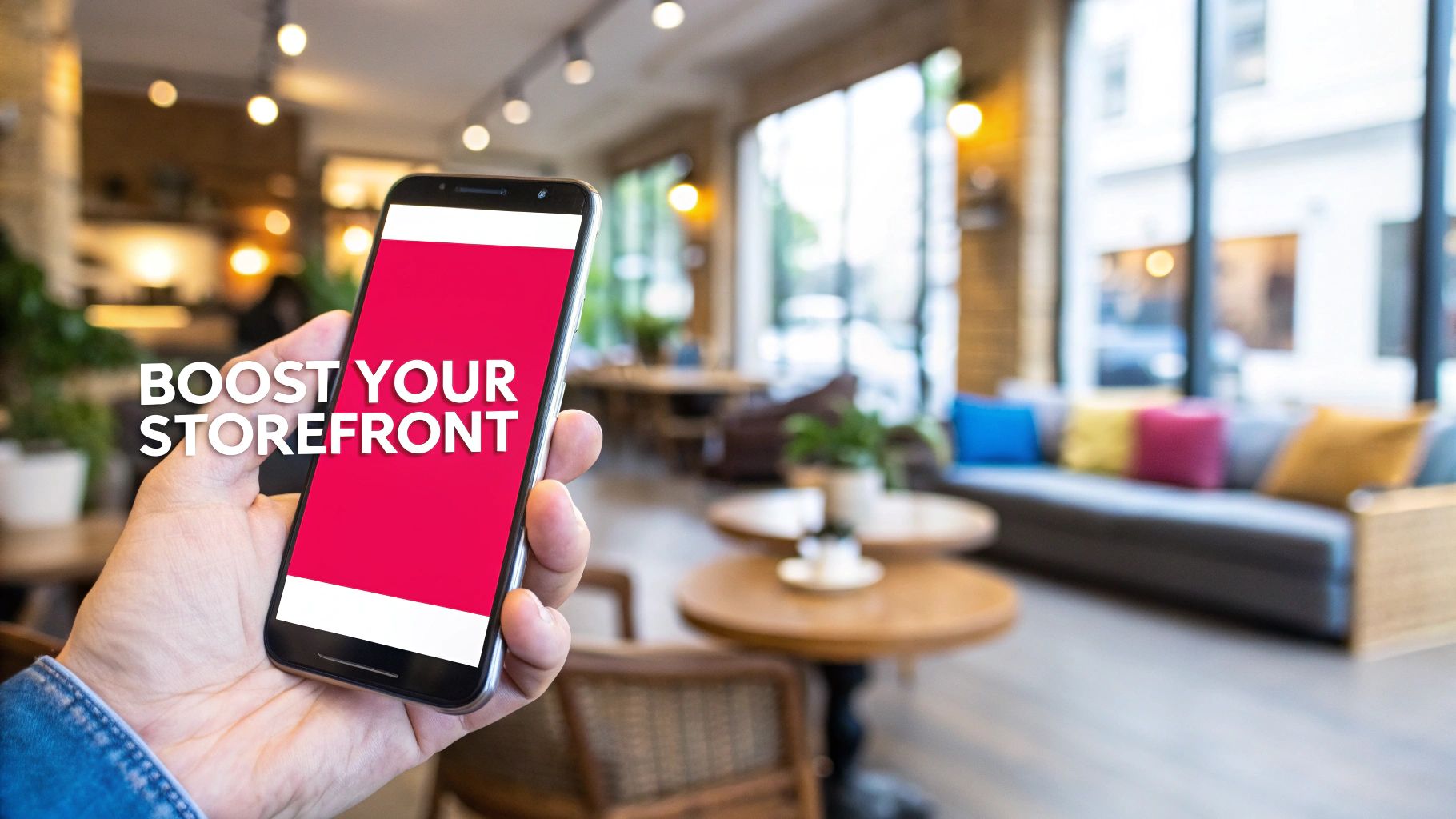
While earning those affiliate commissions from Amazon is a great start, the influencer program amazon unlocks a whole different level of income: partnering directly with brands for paid campaigns.
Getting that official Amazon Influencer approval isn't just a fancy title. Think of it as a stamp of approval, a signal to brands that you're a trusted voice inside the world's biggest online store. Companies are constantly on the lookout for creators who have already passed Amazon's own quality checks and can make content that actually sells products.
This instantly makes you a hot commodity for paid collaborations. You’re no longer just earning passively from commissions; you're stepping into the role of an active, sought-after partner. These deals go way beyond a simple percentage cut and can seriously boost your income and your authority in your niche.
Structuring Your Brand Deals
When a brand slides into your DMs (or emails), the deal can look like a lot of different things. The best part? You're in the driver's seat. You have the leverage to negotiate partnerships that fit your style and your audience, which keeps your content feeling genuine instead of like a forced sales pitch.
Here are a few common ways these paid campaigns are structured:
- Dedicated Review Videos: Brands will often pay a flat fee for you to create a high-quality, in-depth review video of their product. This content works great on your own social channels but is pure gold as an on-site shoppable video on their product page.
- Social Media Shoutouts: You can charge for specific posts, stories, or reels on your main social accounts. This lets you send your followers straight to the brand’s Amazon listing, often through your own storefront link.
- Amazon Live Features: Getting paid to go live is a huge opportunity. Brands frequently sponsor entire broadcasts or specific segments, paying you to showcase their products in a fun, interactive, and real-time format.
By mixing brand deals with your affiliate earnings, you're not just an influencer anymore—you're building a real, scalable business. You become a media partner for brands trying to win on Amazon.
Connecting with Brands
Finding these partnerships isn't just about waiting for them to come to you. While brands might discover you through your fantastic on-site content, you can absolutely be proactive. And this is where platforms designed to bridge the gap between creators and brands become your best friend.
A major trend in the influencer program amazon space is the rise of platforms that use AI to play matchmaker, connecting the right creators with the right brands. This smart approach takes the guesswork out of finding partners, ensuring you're working with companies whose products are a natural fit for your audience.
To make the deal even sweeter, brands will often throw in special promo codes, product bundles, or even giveaways for your followers to drive up excitement. As you can imagine, this whole ecosystem is constantly evolving. You can find more details about these evolving marketing strategies on Awisee to stay ahead of the curve.
Ultimately, this two-pronged approach builds a powerful and sustainable business. You earn trust with your audience by recommending great products, and you build trust with brands by delivering professional, high-impact content. It's a true win-win-win.
Frequently Asked Questions
It's natural to have a few questions when you're jumping into something new. The Amazon Influencer Program is no different, but thankfully, the answers are usually pretty straightforward. Let's tackle some of the most common questions people have.
Think of this as your final checklist to clear up any lingering doubts before you dive in.
How Many Followers Do You Need?
There's no magic number here. Amazon hasn't published an official follower count you need to hit. What they really care about is authentic engagement—things like your likes, comments, and shares carry a lot more weight than just having a massive follower list.
Honestly, a smaller, super-engaged community is often way more valuable than a huge, passive audience. The goal is to show you have a real connection with people who genuinely trust what you recommend.
How Do Amazon Influencers Get Paid?
You'll typically see your earnings about 60 days after the month your commissions were earned wraps up. A key detail to remember: you get credit for a sale when the item ships, not just when it's ordered.
Once you've earned at least $10, you can get paid via direct deposit or an Amazon gift card. If you prefer, they can even mail you a check.
It's a simple, reliable system. Commissions are based on qualifying purchases made through your storefront and on-site content, with rates varying by product category.
Can You Be in Both the Amazon Associates and Influencer Programs?
Absolutely! You can be a part of both. In fact, it's helpful to think of the Influencer Program as an upgraded version of the Associates Program.
It's specifically built for creators who already have a social media following. The biggest perk of being an influencer is getting your own customizable storefront with a unique URL—that's the main advantage over standard associate links.
Managing brand collaborations and making sure you're working with the right partners can feel like a full-time job. With JoinBrands, you can make the whole process a lot easier. Our platform is designed to help you find paid campaigns from top e-commerce brands, handle all the deliverables, and grow your business as a creator, all in one spot. Explore how JoinBrands connects you with your next brand partnership.
